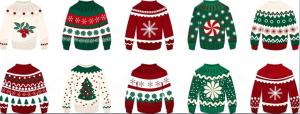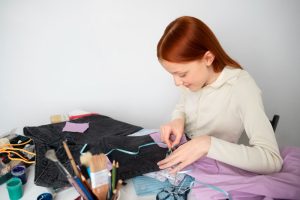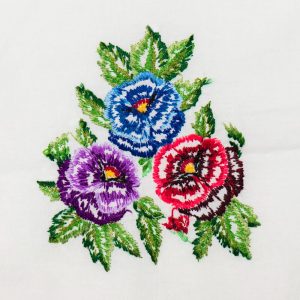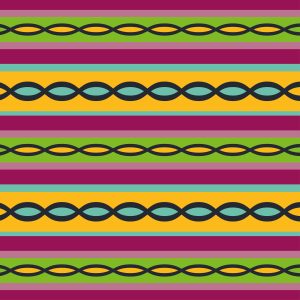Embroidery digitizing is an art and science that requires skill, experience, and deep attention to detail. One misstep can result in a flawed embroidery run, wasted fabric, or a disappointed customer. At Quality Care Digitizing, we understand this reality better than anyone. That’s why we’ve built a proven process to deliver error-free digitizing—every time.
From initial artwork review to final file delivery, our method ensures flawless results. In this article, we’ll walk you through our process and explain how we maintain high standards across every stage.
Understanding Digitizing: The Foundation of Perfection
Before diving into our process, it’s essential to understand what embroidery digitizing truly involves. Many believe digitizing is as simple as converting an image into stitches. But it’s much more than that. It requires choosing stitch types, densities, paths, and even understanding fabric behavior.
At Quality Care Digitizing, we treat digitizing as a precision-based craft, not just a technical task. That perspective sets the tone for our entire process.
Step 1: Client Consultation and Artwork Submission
Everything starts when the customer shares their artwork. We take time to consult with them, whether it's a company logo, custom design, or patch. The submission format doesn't matter—JPEGs, PNGs, PDFs—we handle them all.
To make this process smoother, we provide guidance on how to prepare your artwork for embroidery. Clean, high-resolution artwork allows us to minimize misinterpretations and digitize with accuracy.
Step 2: Initial Review and Evaluation
Once we receive the artwork, our team evaluates it for complexity, stitchability, and design limitations. This step is essential to identify challenges like tiny text, gradients, or overlapping elements.
Our experienced digitizers know exactly what to look for. They can determine whether satin stitches, fill stitches, or manual paths will produce the cleanest result. This stage helps prevent the common errors that plague low-quality digitizing services.
For those considering going the DIY route, we strongly recommend reading our guide on DIY vs. Professional Digitizing to understand the difference expert input makes.
Step 3: Stitch Planning and Digitizing Strategy
Digitizing isn’t just clicking a “convert” button. It requires a smart plan. That includes defining:
- Stitch order
- Underlay strategies
- Pull compensation
- Density adjustments
- Trims and jumps
Every material—caps, polos, jackets—reacts differently under the needle. Our team takes all of this into account. We rely on years of experience and the latest software to create precise instructions for the embroidery machine.
Interested in the tools behind the magic? Check out our detailed article on comparing top embroidery software.
Step 4: Test Runs and Quality Checks
This is the part most services skip, but not us. Once the file is digitized, we simulate the design on-screen and often run real-world test sew-outs on various materials.
We verify:
- Stitch smoothness
- Proper color placement
- Minimal thread breaks
- No puckering or distortion
- Efficient paths (fewer trims and jumps)
Our internal checklist helps us meet strict quality standards. It’s part of our ongoing commitment to error-free digitizing.
Step 5: Customer Review and Revisions
Before final delivery, we share the file and preview image with the customer. If they request revisions, we handle them promptly—whether it’s resizing, tweaking density, or repositioning elements.
We understand that embroidery designs are deeply personal. So, your satisfaction is our priority. And we never charge for minor edits. That’s our quality promise.
Step 6: File Format Delivery and Support
We provide digitized files in the format that matches your machine—DST, PES, EXP, JEF, and more. Along with the design, we also offer stitch charts and color sequence information.
Our support doesn’t end after file delivery. If you run into any technical trouble, our team is ready to help. For a deeper look into commonly asked questions, visit our comprehensive FAQ section.
Special Focus: Vector Cleanup for Hybrid Projects
Often, embroidery projects also require a clean vector version of the logo or design—especially for clients using the same artwork across printing and embroidery.
Our expert vector team handles this with precision. If you need sharp, scalable designs for screen printing or sublimation, you can explore our vector conversion services. We ensure consistency across all mediums.
Real Results: Hear from Our Customers
You don’t have to take our word for it. We’ve worked with thousands of happy customers across the globe—small businesses, schools, and big-name brands.
From consistent stitch-outs to last-minute deliveries, our service has made an impact. Read their experiences in our featured customer stories section. These success stories highlight our dedication to delivering accuracy and value.
Ongoing Training and Staff Excellence
Our team isn't just skilled—they’re constantly evolving. We conduct monthly training sessions to stay current with embroidery trends, software updates, and material science.
We believe that mastery never ends. This commitment to continuous learning helps us innovate and prevent the kind of digitizing mistakes many other services miss.
Digitizing Is More Than Technical—It’s Creative
People often forget that digitizing blends art with engineering. It's not just about where the needle lands—it's about how the thread interacts with fabric, how light reflects on satin stitches, and how patterns create a 3D texture.
To understand embroidery’s broader impact on culture and creativity, check out our post on embroidery in pop culture. It highlights embroidery’s role in fashion, music videos, and beyond.
Why Our Process Delivers Better Results Than the Rest
Other digitizing services may cut corners. Some use auto-digitizing with no human review. Others ignore pull compensation or don’t test their files.
But at Quality Care Digitizing, we’re different.
We:
- Listen to the client
- Customize every stitch
- Test rigorously
- Revise quickly
- Deliver reliably
This hands-on process is why our designs sew perfectly the first time—and every time after that.
Final Thoughts: Our Promise to You
Embroidery digitizing isn't just a service—it's a responsibility. Your brand, your design, your message—it deserves to be represented with quality and precision. And that’s exactly what we deliver.
Whether you're a business owner, apparel decorator, or DIY creator, we make sure your project is in safe hands from day one.
Start your next project with confidence at Quality Care Digitizing—where experience, precision, and care come together.











